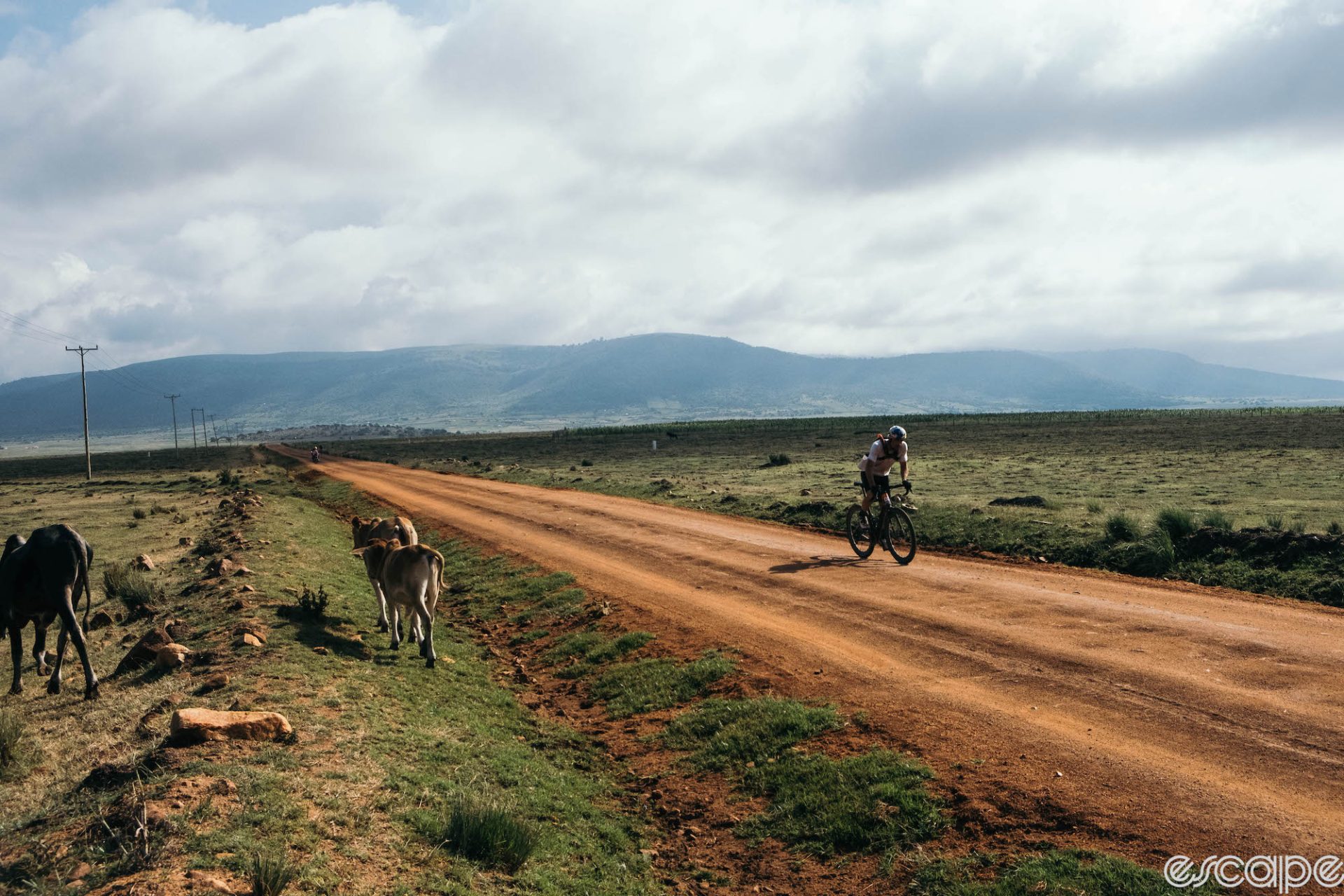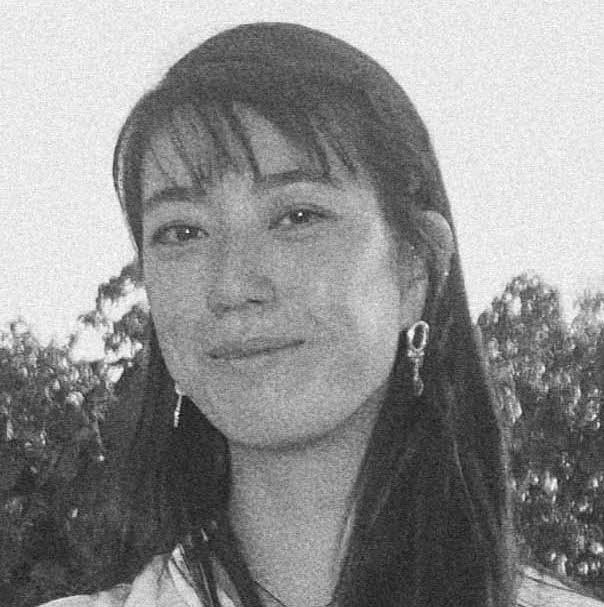Over four days this past June, 108 cyclists raced past otherwise quiet villages across remote sections of Kenya’s Masaai Mara, much to the excitement of children and bemusement of men straddling their boda bodas (motorbikes). The third Migration Gravel Race (MGR), a semi-supported, multi-stage event, is bringing new clout to the Mara – one of Africa’s most famous wildlife safari locations. With 8,000 meters (26,000 feet) of climbing, it’s not for the faint of heart.
But MGR is more than just another gravel race in a cool location. For a country still very much grappling with its postcolonial legacy, convoluted power dynamics are further muddled by questions about how to move forward, balancing “development” with safeguarding age-old customs. Sports, particularly when it comes to who gets to participate, carry a very specific weight.
The race is the brainchild of Mikel Delagrange, an American human-rights lawyer who has worked for the United Nations and the International Criminal Court in The Hague, and who also co-founded Team Amani. The Union Cycliste Internationale (UCI) is a huge barrier to accessibility, according to Delagrange. While the UCI will hold the 2025 Road World Championships in Rwanda and operates both its World Cycling Center in Switzerland and satellite development centers in countries like India, Argentina, and South Africa, “the governing bodies and the industry are content on cycling remaining a purely European sport,” Delagrange maintains.
There are also more human limitations. “You can’t just take 30 East African riders to Europe and expect them to perform their best,” Delagrange continues. “They’ll be homesick, dealing with visa issues, on completely different terrain.” MGR and Team Amani are a response to all that. The team slogan: “If you build it, they will come,” is a nod to the organization’s mandate: making East Africa a premier, international gravel racing destination. Already, MGR is one of three races Amani helps to run, including Safari Gravel and Tanzania’s 850 km Evolution race.
Amani and MGR also consciously address broader forms of colonialism, by partnering with the native Maasai people to help run the event. “Most people just travel to the park to see animals,” says Chief Salaton Ole Ntutu, a widely respected community leader and owner of Maji Moto Camp (the Maasai Mara brings in millions in tourism revenue each year). “But MGR is thinking about the people, how to create employment. So many of the Maasai are uneducated – 80%, perhaps – but now they are respected by international travelers. We appreciate that.”



The day before the race, the storm clouds looming across the savannah’s iconic horizon line finally burst and wrung themselves dry, much to the relief of racers and the support crew alike. “Expect the unexpected,” cyclists were told the evening before day one.
For many, it’s their first time on the African continent. They’re forewarned on hazards: circumventing the stray goats and cattle that will inevitably jam their path, remaining alert to telltale signs of elephant crossings (such as broken branches, akin to the passing of a small tornado), and navigating roads washed out by flash floods. As East Africa finally left behind more than a thousand days of drought, the first of twice-annual rains had arrived slightly behind schedule, making the desiccated bush particularly prone to deluges. On several afternoons, racers huddled underneath the tin roofs at camp, sheltered from torrenting sheets of rain. It was so loud, one could barely be heard shouting.



The Maasai are a dominant East African ethnic community known for their pastoral prowess and inextricable relationship with their cattle, which traditionally constitute the bulk of their wealth and signal social hierarchy. They’ve inhabited what is modern-day Kenya since the mid-18th century after migrating south from the lower Nile Valley. But a legacy of British rule – Kenya gained its independence in 1963 – imposed western systems of legal ownership on the Maasai’s ancestral lands. Although impacts from the subsequent disruption of traditional practices are incalculable, some Maasai leaders are rallying to use opportunities such as MGR to help the community and restore old ways.
Chief Salaton’s Maji Moto Camp (meaning “warm water” in Kiswahili), hosted cyclists during the second night of the race. About a decade ago, he said, he managed to claim the title deed for Maji Moto after the Kenyan government demarcated what were once communal lands. He eschewed a formal education and grew up in the bush as a boy, learning the medicinal value of plants and how to coexist with wild animals.
“I love how my mother, a widow and medicine woman, learned to respect the life of nature,” Salaton tells me as we sit before a fire, grateful for the flames licking away the chill of night. This formative adolescence is what shaped him into a leader, and inspired his mission to bring people from all over the world to the Mara, to interact with local people and learn about Maasai culture.


This year, the MGR was 670 km – a tad longer than previous iterations, thanks to the logistical complexities of designing such a race. The route bifurcated a pastiche of privately owned conservancies – Maji Moto, Lotia, Niboshao – adjacent to the National Park. “Every year, the fencing changes a bit, which means that the course does as well,” says James Savage, the executive director of Savage Wilderness, Kenya’s largest outdoor guiding company. Savage Wilderness is a primary sponsor of MGR, coordinating the bulk of camping and meals for the racers, support crew, and media team. Transitioning from camp to camp is “like moving a small army.”


“I never wanted to be someone who started another ‘development’ project,’’ Mikel Delagrange tells me as we wait for incoming cyclists at a water station at 131 km on stage 2, located just after an intense series of mountainous switchbacks. “But I basically had to because of Sule.”
That’s Suleiman Kangangi, the late co-founder and captain of Team Amani, who passed away in a tragic accident in last summer’s Vermont Overland. Team Amani is still reeling from the loss; his absence is palpable.
“If you want to work in someone else’s country, you have to shut up and listen,” Delagrange continues. This is a barely-veiled dig at the plethora of developmental projects, mostly humanitarian, that generally proliferate the Global South. I comment on how such projects tend to neglect entertainment and hobbies – the aspects of life that give us joy. He pushes back. “It’s not even about results,” he scoffs. “It’s more about what’s in vogue. One year it’s clean water, then it’s malaria. It’s whatever will pull in investor money.”
At its core, Team Amani dictates its own needs and desires. As backers of MGR, they have shaped the race into one that’s sensitive to the land that they ride on, and how that impacts the people who live there. Colonialism introduced practices that alienated individuals; those who had opportunities could make money buying land off others who had none. Chief Salaton believes that MGR is helping restore the Maasai’s diminishing sense of nomadism, the practice of sharing land. “It’s bringing together women and men for ceremonies, from the border of Tanzania, the heart of Maaland [in central Kenya],” he says. MGR means employment involving locals, perhaps even inspiring some youths to try a sport they otherwise would never be exposed to.


Team Amani doesn’t even think about road racing; it doesn’t translate the same in a country where the web of tarmac roads is still very much growing. Instead, gravel is king in East Africa, given how the terrain and style is better suited to local riders. “Gravel racing is how we can race against the best in the world,” says Salim Kipkemboi, a member of Team Amani.
Kipkemboi, who is 24, had a difficult childhood, selling firewood from age 10 to survive. But after being discovered by the Kenyan Riders, a road team in rural central Kenya, his career took off, and he raced several years with the Continental team Bike Aid before turning to gravel. Perhaps it’s such a provenance spurred his vision of doing something else besides racing.
After being on Team Amani for only a year, Kipkemboi realized that he wanted to adopt more of a leadership role. “I was feeling something different,” he tells me over the phone a couple of days after MGR. “Mikel saw something in me change, and approached me about it. It’s really cool that he sensed it.” By early next year, he’ll transition to training Team Amani and scouting for new members all across Kenya. “I know there are kids out there with potential; we just need to find them, show them, motivate them in life,” he tells me.
Kipkemboi got sick during this year’s MGR and was unable to complete the race. On the last day, he had a boda boda pick him up. His Maasai driver, a member of the support crew, asked him what it takes to be a pro cyclist. “Would I be able to cycle in this race someday?” the driver asked. “Of course you could,” Kipkemboi replied as they sped down the dust-filled dirt path toward the finish line. “You never know what’s out there.”

Kang-Chun Cheng is a Nairobi-based photojournalist reporting on climate change, cultural continuity within Indigenous communities, foreign aid, and outdoor adventure. She is a member of Women Photograph and can likely be found climbing rocks in her free time.
What did you think of this story?

